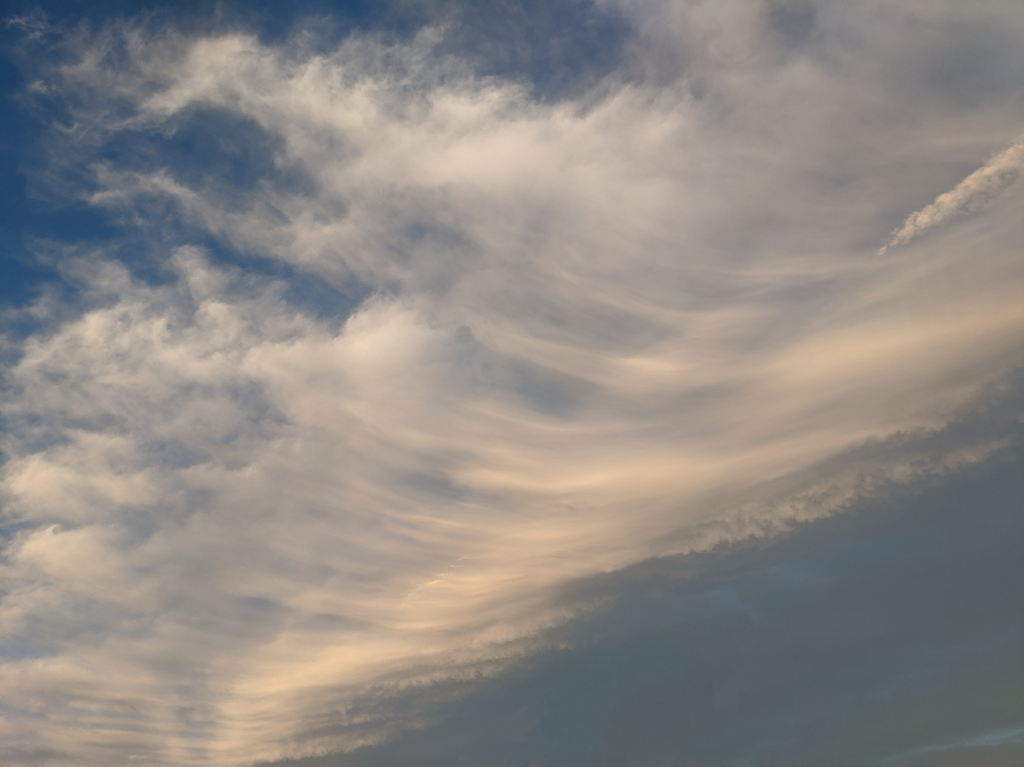Part of a long altostratus lenticularis caused by a mountain wave . Taken on University Hill facing north east. Taken with a Google Pixel 2XL at f/1.8 aperture, 1/616 seconds shutter speed, ISO61, and a focal length of 4.459 mm.
Clouds Second // Peter Rosenthal
Categories
Search for content or authors
Flow Vis Guidebook
- Introduction to the Guidebook
- Overview 1: Phenomena. Why Does It Look Like That?
- Overview 2: Visualization Techniques
- Overview 3: Lighting
- Overview 4 - Photography A: Composition and Studio Workflow
- Overview 4 - Photography B: Cameras
- Overview 4 - Photography C: Lenses - Focal Length
- Overview 4 - Photography C: Lenses - Aperture and DOF
- Overview 4: Photography D: Exposure
- Overview 4 - Photography E - Resolution
- Overview 5 - Post-Processing
- Clouds 1: Names
- Clouds 2: Why Are There Clouds? Lift Mechanism 1: Instability
- Clouds 3: Skew - T and Instability
- Clouds 4: Clouds in Unstable Atmosphere
- Clouds 5: Lift Mechanism 2 - Orographics
- Clouds 6: Lift Mechanism 3 - Weather Systems
- Boundary Techniques - Introduction
- Dye Techniques 1 - Do Not Disturb
- Dye Techniques 2 - High Visibility
- Dye Techniques 3 - Light Emitting Fluids
- Refractive Index Techniques 1: Liquid Surfaces
- Refractive Index Techniques 2: Shadowgraphy and Schlieren
- Particles 1- Physics: Flow and Light
- Particles 2: Aerosols
- Particles 3: In Water
- Particles 4 -Dilute Particle Techniques
- Art and Science
- TOC and Zotpress test
- Photons, Wavelength and Color

8 Comments. Leave new
Love the photo. I like how you included both a panorama and a close up to give better context for the image.
This reminds me of a wave that is crashing into the beach.
Did you comb the cloud? Looks good
Pretty sweeping, the curvature is great!
It is really interesting how the cloud seems to act like a water wave crashing on a surface.
The panorama version looks great!
Great images, I like the panorama version!
The panorama for context is really cool and helpful!